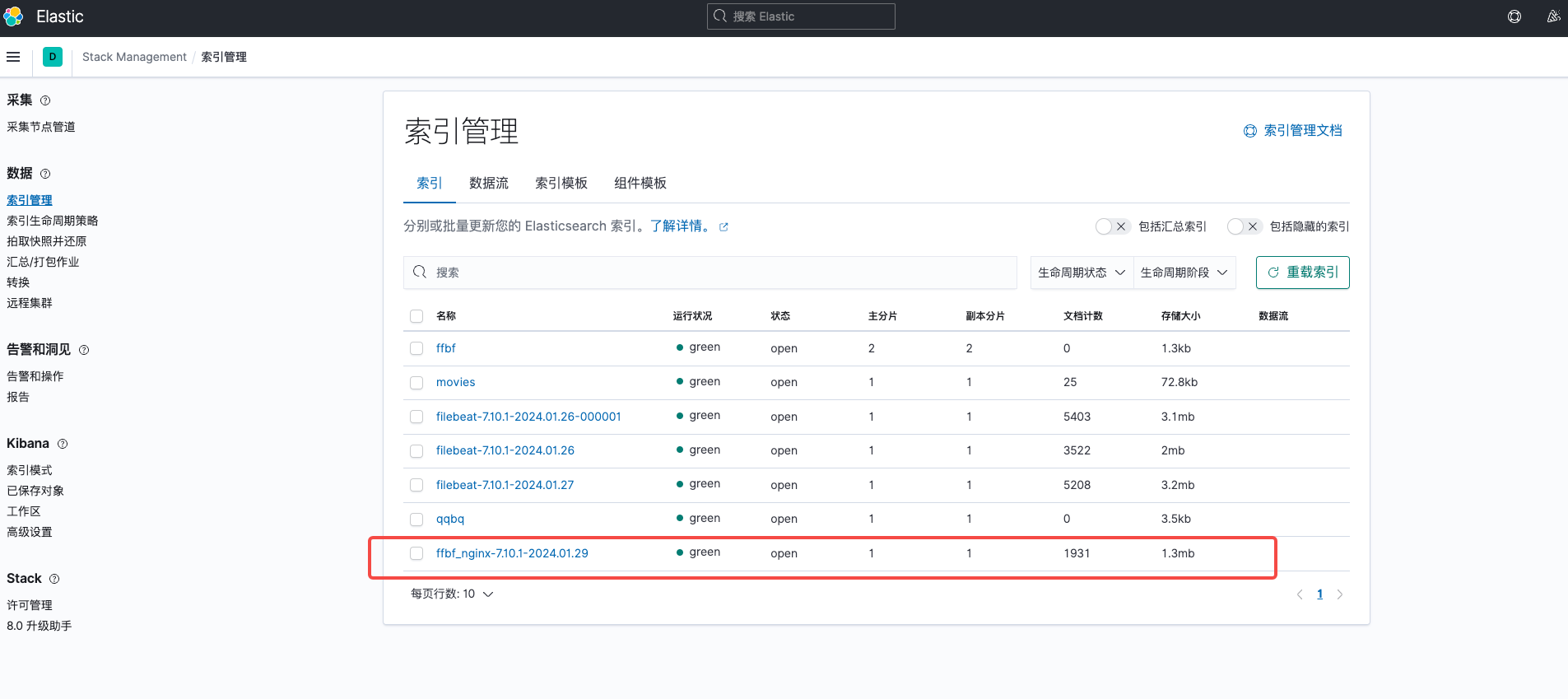一、安装Filebeat
注意:所有版本需要一直,我这里Elasticsearch是7.10.1,包括后期的Logstash那些都需要版本一致。
我在/data下新建了一个filebeat目录
下载并解压filebeat
curl -L -O https://artifacts.elastic.co/downloads/beats/filebeat/filebeat-7.10.1-linux-x86_64.tar.gz
tar xzvf filebeat-7.10.1-linux-x86_64.tar.gz进入解压后的filebeat目录,嫌目录文件名长的话可以用mv命令修改一下。
[root@postgresql filebeat]# cd filebeat-7.10.1-linux-x86_64二、配置Filebeat
解压后就是已经安装好了,接下来配置filebeat
在目录下可以看见有个filebeat.yml文件,默认是不启用的。
编辑配置文件filebeat.yml
vim filebeat.yml 修改filebeat.inputs输入设置
将enabled设置为True,默认关闭的
paths的路径就是你要收集的日志文件路径。
filebeat.inputs:
# Each - is an input. Most options can be set at the input level, so
# you can use different inputs for various configurations.
# Below are the input specific configurations.
- type: log
# Change to true to enable this input configuration.
enabled: true
# Paths that should be crawled and fetched. Glob based paths.
paths:
- /data/logs/*.log
#- c:\programdata\elasticsearch\logs\*接着修改output.elasticsearch输出设置
这里我是通过filebeat直接推到Elasticsearch,默认也是推到Elasticsearch的,其它地方都是注释掉的。
hosts:设置你的Elasticsearch地址,将localhost替换为你的es地址,我这里是都在本机。
index:默认是没有的,这里设置索引格式为ffbf_nginx-版本号-日期,默认格式为filebeat-版本号-日期。
setup.template.name :模板的名称。默认是filebeat。 Filebeat 版本始终附加到给定名称,因此最终名称为 filebeat-%{[agent.version]}。
setup.template.pattern :应用到默认索引设置的模板模式。默认模式是 filebeat-*。 Filebeat 版本始终包含在模式中,所以最终的模式是 filebeat-%{[agent.version]}-*。通配符 -* 用于匹配所有每日索引。
setup.ilm.enabled :对 Filebeat 创建的任何新索引启用或禁用索引生命周期管理。 有效值为 true、false 和 auto。 当在 7.0 及更高版本上指定 auto(默认)时,如果 Elasticsearch 中启用了该功能并且具有所需的许可证,Filebeat 会自动使用索引生命周期管理; 否则,Filebeat 将创建每日索引。
output.elasticsearch:
# Array of hosts to connect to.
hosts: ["localhost:9200","localhost:9201","localhost:9202"]
index: "ffbf_nginx-%{[agent.version]}-%{+yyyy.MM.dd}"
#注意:自定义索引就必须配置下面的参数,下面3项配置不要和index平齐,放在顶格不然启动报错.
setup.template.name: "ffbf_nginx"
setup.template.pattern: "ffbf_nginx-*"
setup.ilm.enabled: false:wq保存退出
三、启动Filebeat
启动filebeat,此时是占用命令行的,输入Ctrl+C终止
./filebeat输入下面的命令启动filebeat并控制台打印信息,也直接可以后台运行。
./filebeat -e四、索引管理
查看索引管理,是按我们设置的格式创建的。

但是在Discover默认只有filebeat-*,在索引模式创建个新的索引模式

匹配所有以ffbf_nginx-开头的

选择时间字段

设置为默认索引

这时候回到Discover查看,默认显示ffbf_nginx的日志
我这里是手动把/data/logs/下的日志文件多复制了一份出来,可以看到16:19分的时候又记录了一千多条日志进来。






评论区